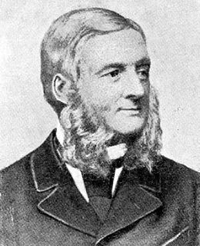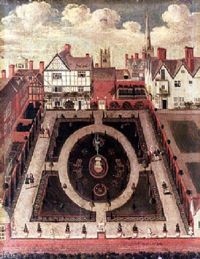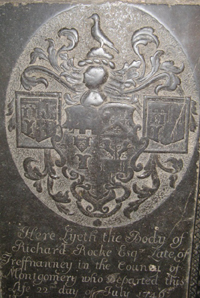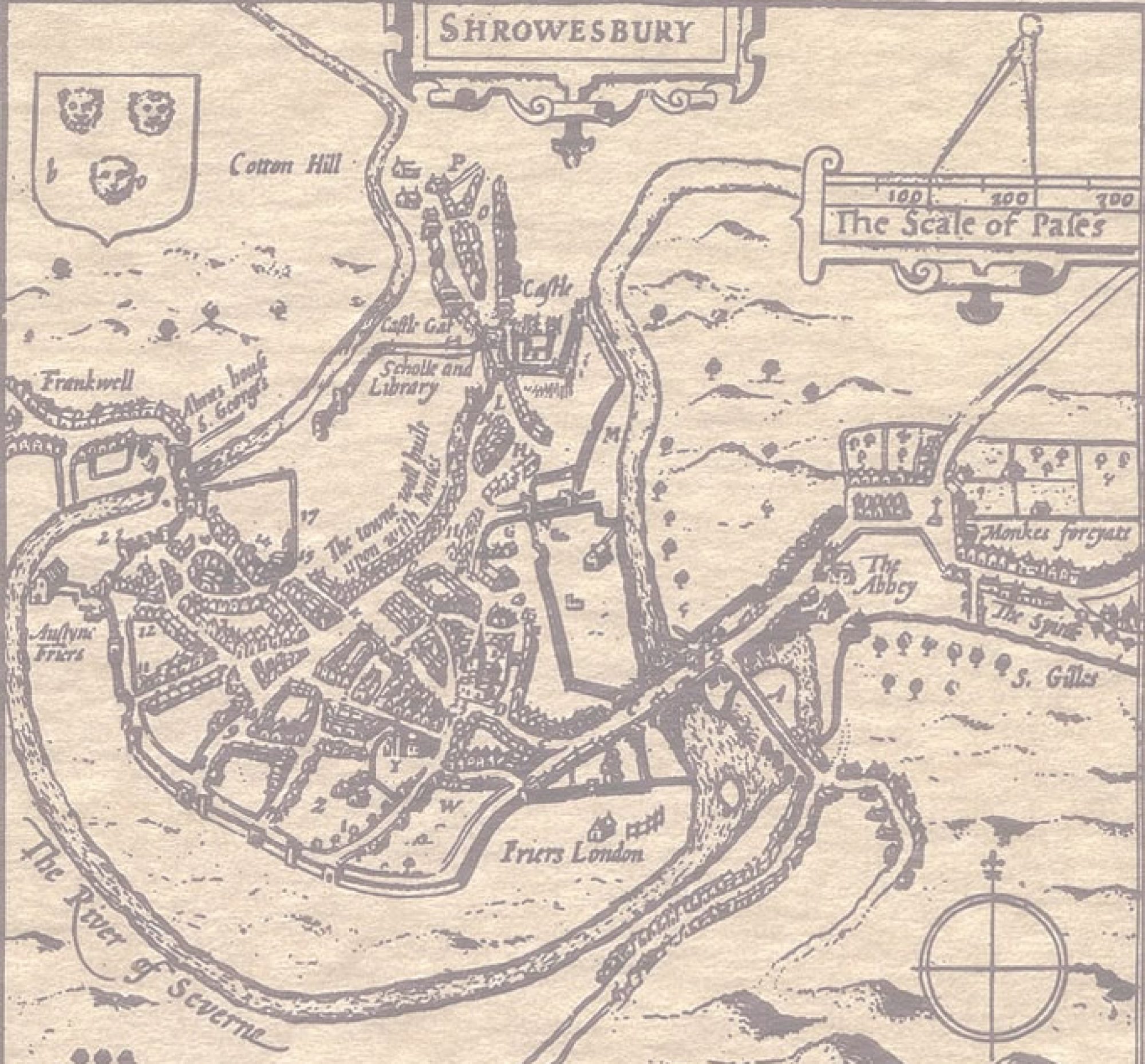Rocke Street is a short street joining Scott Street with Reabrook Avenue in Belle Vue, Shrewsbury, near Old Potts Way.

The first record of the Rocke family in Shrewsbury goes back to 1230. [footnote 1] They were in the leather trade, particularly glove making, which began to be developed as a trade guild at about this time. [footnote 2] The family prospered and cemented their influence by marrying into a number of well known gentry families. [footnote 3] Such was the prosperity of the family that, after the dissolution of the monasteries by Henry VIII, one Thomas Rocke was able to buy much of the property and lands that formerly belonged to Shrewsbury Abbey in the Abbey Foregate area. These included 28 houses, three water mills and 245 acres of land. [footnote 4]

In 1599 the Rocke family also bought the Old House, Dogpole, with its neighbour the Oak House (number 21). [footnote 5] The view of the rear of the two houses was painted in 1700. This shows the magnificent formal gardens then popular – evidence of the prestige of the Rocke family and the prosperity of Shrewsbury at that time.
This branch of the Rocke family had no sons, so these properties passed to others. However, at about the same time another branch of the family moved their main residence from the Meifod area of mid Wales to Shrewsbury. [footnote 6] Rev John Rocke (1755-1824) was Vicar of Wellington and Mayor of Shrewsbury in 1792. In 1795 he entered into partnership with his brother in law Thomas Eyton in the Shrewsbury Old Bank. [footnote 7] Eyton, whose family owned Eyton Hall, near Wellington, was a popular local figure, known for his generosity. Eyton also became the Receiver General of Taxes for Shropshire in the early years of the nineteenth century. This post involved overseeing the collection of taxes on land, property, servants, horses and carriages and similar things; the Receiver General kept and banked the money and then paid the government the full amount at the end of the tax year. In January 1816 Thomas Eyton suddenly committed suicide (the story is recounted in Charles Darwin’s Autobiography [footnote 8]), as it was about to be revealed that he had been using these government funds to finance land deals and his lavish lifestyle, so he was in debt to the government to the tune of £300,000 (over £10 million in today’s money) [footnote 9]. Trading at the bank ceased immediately, as property jointly owned by Eyton and Rocke was seized by the government. Thinking that the bank had gone bust, panic spread to other banks in Shrewsbury, as well as Bridgnorth, Whitchurch and Nantwich. [footnote 10] Fortunately, it was soon realised that the Bank itself was not insolvent, but before the government allowed it to reopen, the remaining partners (John Rocke, John Rocke junior, and Thomas Eyton junior), incurred considerable financial penalty, and were forced to bring others into the partnership. [footnote 11] But the biggest losers were three gentry families (including the Hills of Hawkstone), who had provided a bond to the crown for the payment of the taxes. [footnote 12]
Rev John Rocke junior (1783-1849) was Vicar of Wellington like his father, and also Rector of Clungunford, where he built a new family seat at Clungunford Hall in 1828. [footnote 13] His oldest son was another John Rocke (1817- 81), whose chief interest was natural history, especially birds. [footnote 14] While still at Harrow School he started collecting and stuffing birds, a hobby he was able to greatly develop when he inherited Clungunford Hall in 1849. He got to know many of the leading ornithologists in the country, and through them he was able to obtain specimens of every British bird, male and female, and their eggs, even including an extinct Great Auk and its egg! These he housed in a museum in a specially built wing at Clungunford Hall. (Some of the specimens have survived and are in storage in Ludlow Museum.) [footnote 15]

A great lover of all field sports, in 1841 Rocke and a friend travelled to the then little known country of Norway on a salmon fishing expedition. Between them they caught 174 fish, whose combined weight was over a ton (1000kg), and the largest of which was 47lb (21.5kg) [footnote 16]. To help fund such expensive tastes, in 1851 Rocke sold 8 acres of the former Abbey lands in Belle Vue to the Shrewsbury and Hereford Railway Co on which they built both the new line and the associated railway works. [footnote 17]
Footnotes
[1] William Phillips’ Shropshire Men, Vol. IV, p.215ff, SA 6001/222
[2] http://www.goleathergloves.com/history-of-gloves.htm, accessed 1.5.2013
[3] Phillips, op cit
[4] http://www.discovershropshire.org.uk/html/search/verb/GetRecord/theme:20060930105202
[5] http://www.discovershropshire.org.uk/html/search/verb/GetRecord/theme:20070425162748
[6] Pedigree of Rocke of Shrewsbury, SA 4109/3; Phillips, op. cit.
[7] Grant, GL, The Standard Catalogue of Provincial Banks and Banknotes, Spink 1977; SA 665/5966, footnote 4
[8] Charles Darwin, Autobiographies, Penguin Edition, 2002, p.18
[9] SA 665/469; Morning Chronicle 6.12.1820
[10] Liverpool Mercury, 9.2.1816; Morning Post, 12.2.1816
[11] SA 665/469; SA 665/477
[12] SA 665/469; Morning Chronicle 6.12.1820
[13] Phillips, op. cit; Charles H Mate, Shropshire,Vol. I, p.55
[14] HE Forrest, The Fauna of Shropshire, Wildings, 1899, p.27ff
[15] Forrest, op. cit.; Tucker JJ and Tucker PG, The Historical Ornithology of Shropshire, 2012, http://www.lanius.org.uk/sos/sos-gallery.html, accessed 1.5.2013
[16] Phillips, op. cit
[17] SA D3651/B/18/2/76/1 (conveyance)
